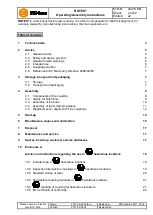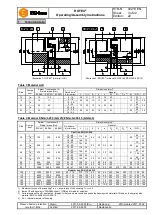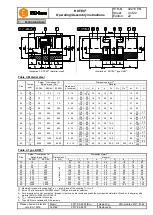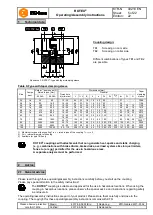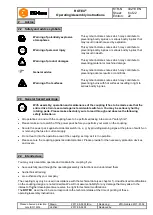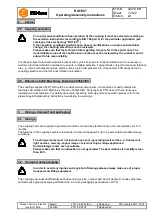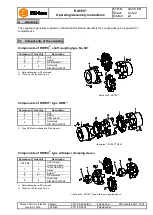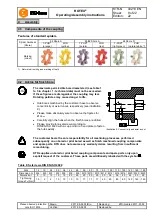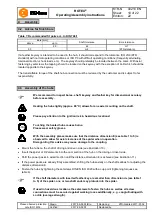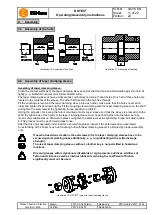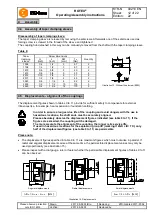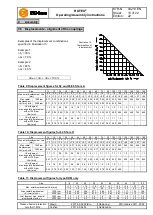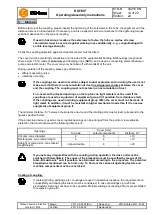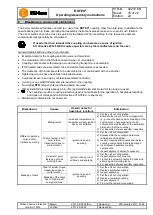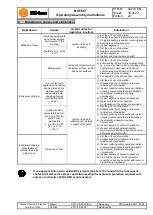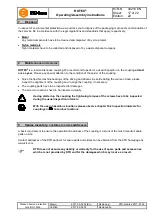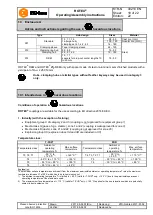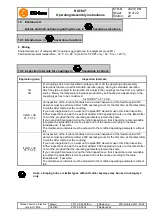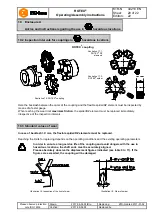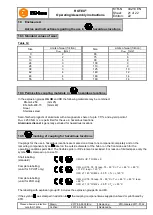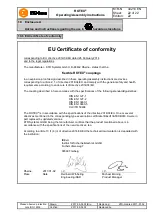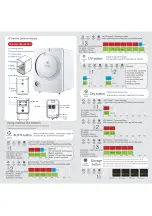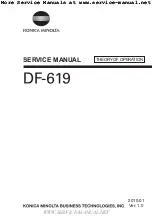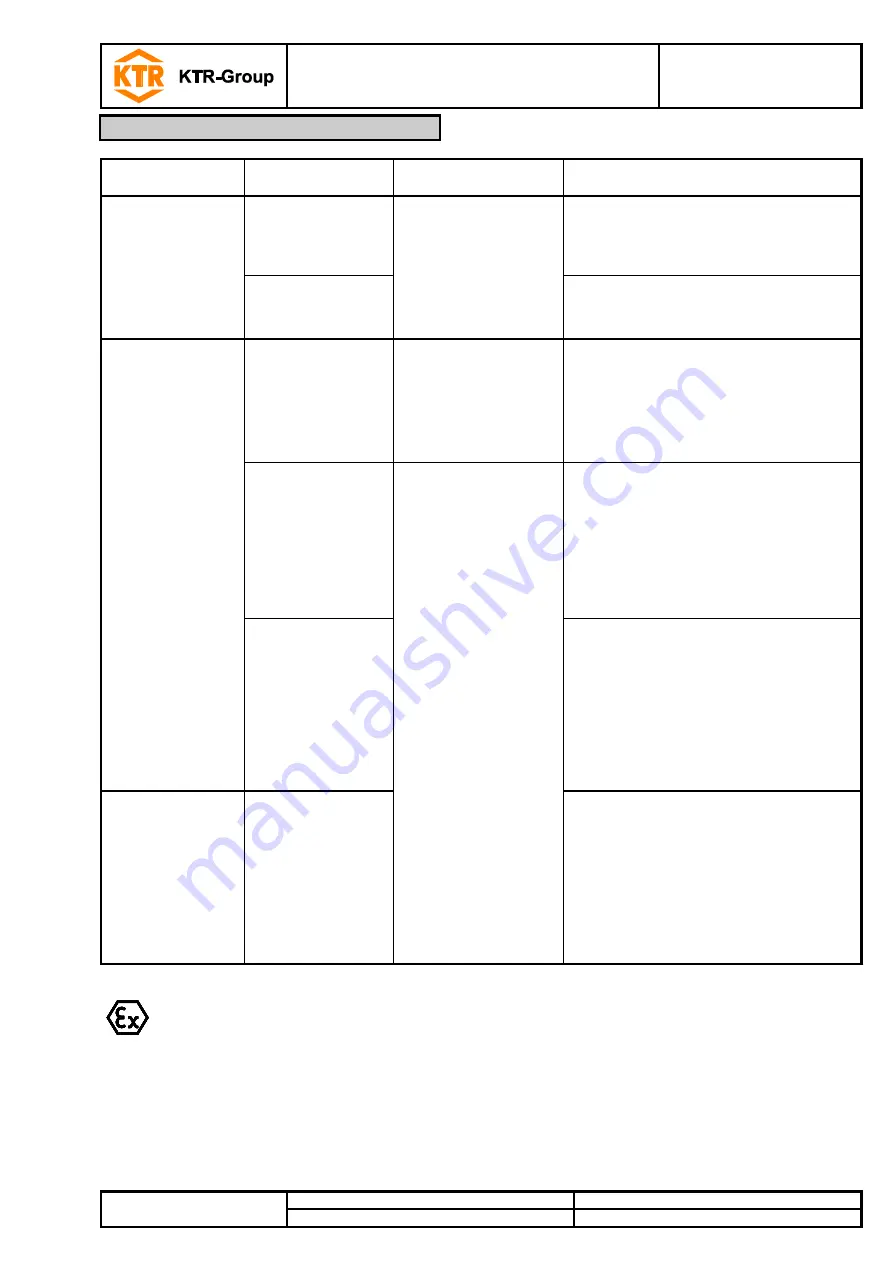
ROTEX
®
Operating/Assembly instructions
KTR-N
Sheet:
Edition:
40210 EN
16 of 22
22
Please observe protection
note ISO 16016.
Drawn:
2017-09-06 Pz/Bru
Replacing:
KTR-N dated 2017-01-02
Verified:
2017-09-06 Pz
Replaced by:
Breakdowns
Causes
Hazard notes for
hazardous locations
Elimination
Breaking of cams
Operating parameters
do not meet with the
performance of the
coupling
Ignition risk due to
sparking
1) Set the unit out of operation
2) Review the operating parameters and select
a bigger coupling (consider mounting space)
3) Assemble new coupling size
4) Inspect alignment
Operating error of the
unit
1) Set the unit out of operation
2) Replace complete coupling
3) Inspect alignment
4) Instruct and train the service staff
Early wear of spider
Misalignment
Increased temperature on
the spider surface; ignition
risk by hot surfaces
1) Set the unit out of operation
2) Eliminate the reason for the misalignment
(e. g. loose foundation bolts, breaking of the
engine mount, heat expansion of unit
components, modification of the installation
dimension E of the coupling)
3) For inspection of wear see item inspection
e. g. contact with
aggressive liquids/oils,
ozone influence, too
high/low ambient
temperatures etc.
causing physical
modification of the
spider
Ignition risk due to
sparking with metallic
contact of the cams
1) Set the unit out of operation
2) Disassemble the coupling and remove
remainders of the spider
3) Inspect coupling components and replace
coupling components that are damaged
4) Insert spider, assemble coupling
components
5) Inspect alignment, adjust if necessary
6) Make sure that further physical
modifications of the spider are excluded
Ambient/contact
temperatures which
are too high for the
spider, max.
permissible
e. g. with T-PUR
®
T4 = - 50 °C/
+ 120 °C
1) Set the unit out of operation
2) Disassemble the coupling and remove
remainders of the spider
3) Inspect coupling components and replace
coupling components that are damaged
4) Insert spider, assemble coupling
components
5) Inspect alignment, adjust if necessary
6) Inspect and adjust ambient/contact
temperature (possibly corrective by using
different spider materials)
Early wear of spider
(liquefaction of
material inside the
spider cam)
Vibrations of drive
1) Set the unit out of operation
2) Disassemble the coupling and remove
remainders of the spider
3) Inspect coupling components and replace
coupling components that are damaged
4) Insert spider, assemble coupling
components
5) Inspect alignment, adjust if necessary
6) Find out the reason for the vibrations
(possibly corrective by spider with lower or
higher Shore hardness)
If you operate with a worn spider/DZ elements (see item 10.3) and with the subsequent
contact of metal parts a proper operation meeting the explosion protection requirements
and acc. to directive 2014/34/EU is not ensured.
6
Breakdowns, causes and elimination

